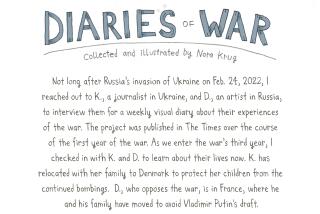‘The Vietnam War: A Graphic History’ by Dwight Jon Zimmerman and Wayne Vansant
The Vietnam War still drags at us. Unlike the Civil War or World War II, we haven’t figured out how to catalog it and put it away. It eludes definition; historians can’t even make up their minds when it began and ended.
That lack of definition, suggests “The Vietnam War: A Graphic History,” a nifty book-length comic written by Dwight Jon Zimmerman and drawn by Wayne Vansant, was the problem from the outset, as we allowed ourselves to be seduced by a series of “high concepts” (the domino theory, Vietnamization) that failed to reflect reality.
But unlike many books on Vietnam, this one doesn’t come with an agenda. The clear text and illustrations lay out the stages of the war in a reasonable, direct way. The experience is partly like reading something that pricks the nostalgia of its time and partly like seeing footage on an old newsreel.
Zimmerman and Vansant begin in the Oval Office with President Lyndon Johnson, who is torn between his desire to create an America where no one has to go without and his fear that communism will spread in Vietnam.
“[H]e did not want a declared war to focus the nation’s resources on the other side of the world and siphon away the funds he needed for Great Society programs,” Zimmerman writes.
From there, the book details the failures in ideology and commitment that marked our Vietnam experience; in a few places, the mix of topics feels like scrambled succotash, but then, that’s a pretty accurate description of the war.
Among the highlights of the book are stories such as that of boatswain’s mate 1st class James E. Williams, whose two-boat PBR patrol came upon 40 sampans carrying 800 North Vietnamese army regulars and zoomed through with guns blazing to emerge almost unscathed. As they were exulting over their miraculous escape, the crew rounded a bend only to discover an even larger convoy. Again they attacked, challenging the enemy, and calling in airstrikes that inflicted 1,000 casualties.
It’s a scene suffused with the strangeness of “Apocalypse Now” -- yet true.
“The Vietnam War” features an excellent combination of narrative and hard information. It’s concise and accessible, yet Zimmerman and Vansant have somehow sifted through the hype that still surrounds our engagement in Southeast Asia to tell this complicated story in a condensed and unassuming style.
Maury is a New York-based writer and critic.
More to Read
Sign up for our Book Club newsletter
Get the latest news, events and more from the Los Angeles Times Book Club, and help us get L.A. reading and talking.
You may occasionally receive promotional content from the Los Angeles Times.






